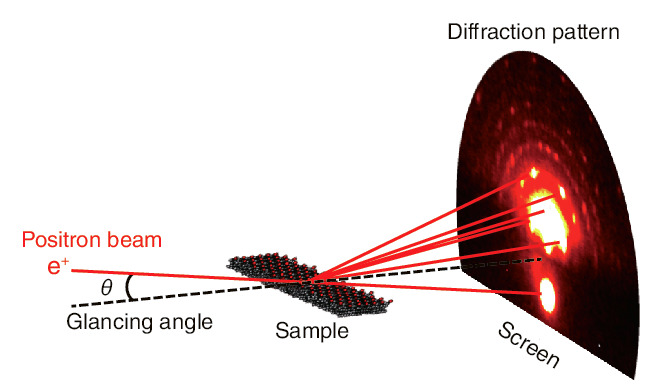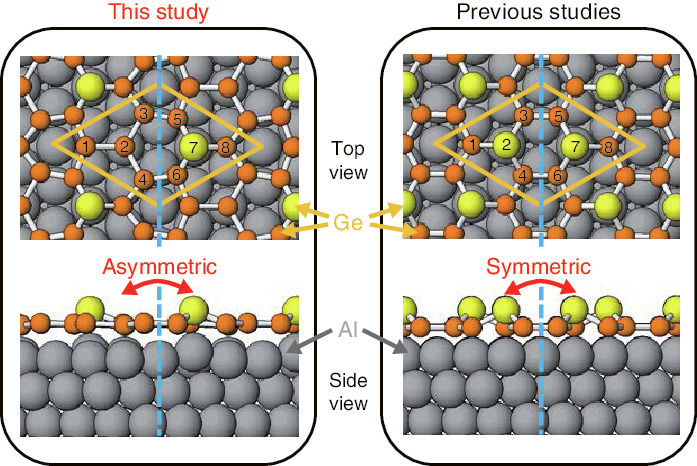
Fig.3-11 Experimental setup of total-reflection high-energy positron diffraction (TRHEPD)

Fig.3-12 Atomic configurations of germanene determined in this study (left) and expected in the previous studies (right)
As expected post-graphene materials, efforts have been made to fabricate novel atomic sheets composed of heavier group-IV elements with the honeycomb structure of graphene. For instance, atomic sheets of silicon and germanium are called silicene and germanene, respectively. Owing to the expected buckling configuration due to the bonding character and the stronger spin-orbit interaction in heavier atoms, these materials are expected to provide novel spin-related properties.
Graphene can be obtained by exfoliation of graphite, which is well-known for its use as pencil lead. Since silicene and germanene lack parent materials like graphite, they have been regarded as a research target for theorists. However, research on such atomic sheets has opened up since the successful synthesis of silicene on Ag and ZrB2 substrates in 2012.
In 2015, a uniform, large-area germanene sheet was fabricated on an Al substrate. Germanene was expected to have buckled structure due to its bonding character, which sharply contrasts with the flat structure of graphene. Therefore, there are many possible structural models for germanene because of its complex buckling configurations. Moreover, it is not easy to investigate such a material, which has a thickness of only one atomic layer. In this study, we tried to reveal the atomic configuration of germanene using a total-reflection high-energy positron diffraction (TRHEPD) technique.
Fig.3-11 shows the experimental setup of the TRHEPD method, by which positrons, the antiparticles of electrons, are used as a probe beam. Since the positron beam has a positive charge (opposite to that of electrons), it cannot penetrate the deeper bulk region because of the strong repulsive force from the positive point charge of the nucleus. In particular, total reflection takes place at a low incidence angle; therefore, the positron beam selectively sees the topmost surface layer.
In previous studies, two Ge atoms (labeled 2 and 7 in the right panel of Fig.3-12) per unit cell were shifted upwards, suggesting a symmetric structure. However, the TRHEPD experiments demonstrated that the spot intensities diffracted to the left and right differ. This indicates that the atomic configuration of germanene is not symmetric. The detailed intensity analysis shows that only one Ge atom (labeled 7 in the left panel of Fig.3-12) is shifted upwards. As a result, the newly proposed structural model may have novel germanene properties.
Recently, atomically thin superconductors have been shown to exhibit higher superconducting transition temperatures as compared with those of the corresponding bulk materials. In the near future, we will fabricate such fascinating atomic sheets and investigate the atomic configuration to reveal novel properties.
<Previous: 3-4 | Next: 4 Nuclear Science and Engineering Research>